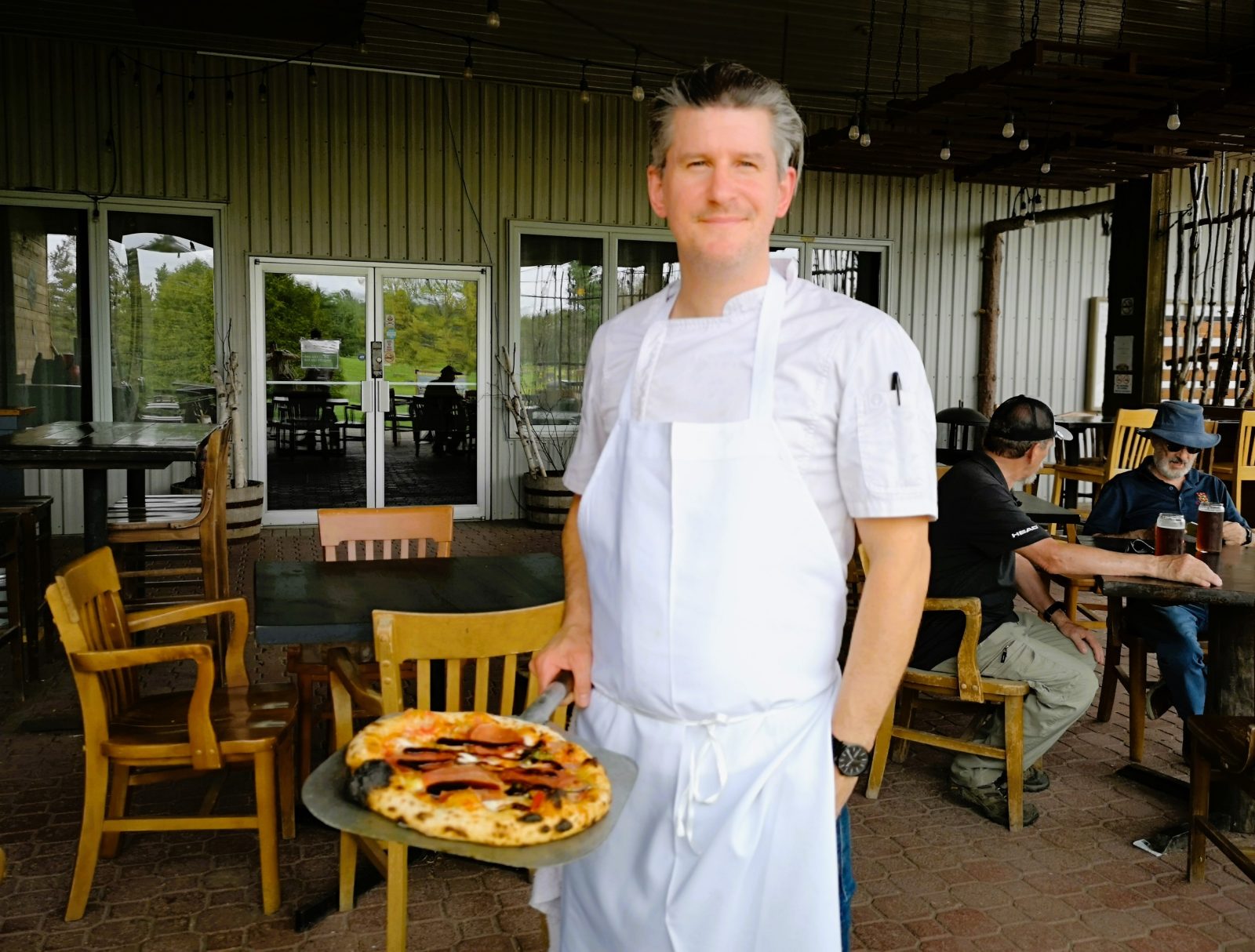The Hammond Golf and Country Club restaurant shares space with Broken Stick Brewing Company which, at least when it first opened, was the first microbrewery in the country on a golf course.
In addition to their attention to the craft of brewing fine beer and ale, craft breweries usually distinguish themselves by their unique settings.
You will find microbreweries in dense urban areas and in more sparse and industrial plazas; some are exquisitely retro’d blacksmith shops, slit barns and textile factories in brick-and-beam buildings 150 years old.
Some harken to an era when sawmills were in full operation or were massive facilities that once made washing machines and hockey sticks, or others popping up in buildings that were the very foundation of Canada’s whisky-distilling and cooperage history – using reclaimed old barrels to add flavour to hops and malted barley.
Still others have bicycle themes, so why not golf?
What has rapidly evolved over the years as the craft beer market has tightened – along with many consumers’ pocketbooks – has been the need for small brewers to define their business as an “event space” for meetings, live music, trivia nights, axe throwing, life celebrations and, of course, weddings.
While some of the alliances are merely perfunctory and grasp at establishing a cohesive alliance, Broken Stick contributes to a quite natural and organic partnership with the golf club and much of the food served is natural and organic too.
Having put himself through a Bachelor of Fine Arts program by working in kitchens before graduating from Le Cordon Bleu, Ottawa-born chef Nick Berolo has headed up the golf course kitchen for the last three years.
Open year-round Wednesday to Sunday, the kitchen and restaurant serve both the local community as well as golfers coming in off of 18, but whomever he’s serving, Berolo says creativity in cooking comes from a “child-like” process.
He describes a playful twist on Terry’s Chocolate Orange, a popular childhood treat, which he once created a few years ago at another restaurant: he blanched a Clementine, cooked it sous vide in simple syrup for a couple of hours at 90F and stuffed it with chocolate-orange ice cream before freezing it.
“We cut the orange in four pieces and served it in a wooden Clementine box. That ability is really important to me. Creativity comes from that arena you can put your mind in. Some amazing things come from just playing around,” he says.
Playful or not, his focus remains on preparing food in-house and from scratch using as many local ingredients from the immediate area as possible.
Organic lettuces, kale and vegetables come from Fireside Farms in Clarence Creek; their in-house charcuterie program prepares meats like culatello for one of Berolo’s eight wood-fired Neapolitan pizzas.
“We make a salami with ghost peppers from our garden and grow heirloom tomatoes too,” he says. “We’ve also prepared fermented hot-pepper sauce that we’ve sold.”
There’s the occasional “farm and forage” series, which features ingredients foraged from the Hammond property.
There’s Hammond honey too.
Just outside the kitchen, tucked away adjacent to the 80-seat patio dining area, is Berolo’s wood-fired pizza oven which, when up and running, clocks in at about 700F. Burning area hardwood, the cooks stack the split logs in the oven and get the flames racing quickly by pointing a hairdryer at it.
It’s technique I’ve not heard of before, but he pizzas that go into the oven come out as delicious.
“I think our dough really stands out,” Berolo says, adding that the recipe and techniques have been refined over time.
Mixed and hydrated for 20 minutes before salt is added, the dough gets mixed again for about seven minute before being proofed in a low-temperature oven for 20 minutes.
“The dough is folded over on itself five times that builds tension and envelops air. It ferments for 90 minutes and then undergoes a bulk ferment in the fridge for about two days,” Berolo says.
Drawing on the fine, soft wheat of “double-zero” flour made in Quebec which has higher protein and lower gluten than all purpose flour, Berolo mixes the dough at 65% hydration.
Hand-stretched and topped, just a few minutes in the oven yields a soft yet chewy pizza crust with a crisp, raised cornicione edge and the “leoparding” spots of light char that characterize a Neapolitan-style pizza.
“It’s a fresher flour, and it’s great to use a Quebec product and support local. It’s also less expensive than double-0 flour shipped from Italy,” Berolo says.
Otherwise, “Scratch Kitchen” menu is straightforward and accessible with starters and shareables, sandwiches and burgers, mains, assorted sides and desserts.
Fresh-cut fries are made with Delorme Farm potatoes – they play a role in the poutine which features Berolo’s plant-based gravy and St-Albert cheese curds.
From a selection of nine handhelds, burgers freshly ground from brisket can be served slightly pink, and he riffs playfully on the Big Mac with the McHammond: two patties with Cheddar cheese, shredded iceberg lettuce, pickles, a “Mac” sauce and a sesame-seed bun.
Pastrami for a Reuben is brine-aged in-house for two weeks, smoked for seven hours and cooked sous vide and is complemented by mustard made with Broken Stick beer.
There are four mains, including short rib gnocchi, a 10-oz. ribeye and fish and chips; truffled Parm fries are an option.
Whether you’ve just finished a round of 18 or not, Berolo and his kitchen crew of six are motivated to serve dishes in a unique craft brewery taproom drawing on as many local ingredients as possible.
“We work hard to source products from the community around us and support them,” he says. “I love the sense of community here.”
Food writer Andrew Coppolino lives in Rockland. He is the author of “Farm to Table” and co-author of “Cooking with Shakespeare.” Follow him on Instagram @andrewcoppolino.



